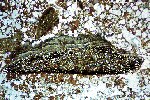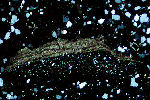![]() Very irregular distributions
Very irregular distributions
A very irregular distribution of soil carbonates is evident: some voids have a thick coatings, others a very thin or none at all.
In the case of ground water deposits on the contrary the carbonate accumulations are much more uniform (all the voids bear similar coatings, very homogeneous inside a same pore).
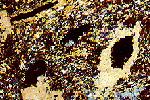
![]() Discontinous coatings
Discontinous coatings
The coatings of soil carbonates are sometimes interrupted, giving rise to discontinuous coatings.
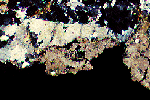
![]() Pendants
Pendants
Drying of the soil results in a larger retention of soil moisture below gravels, giving rise to the formation of pendants.
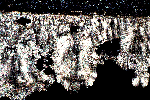
![]() Bridged grains
Bridged grains
As a result of desiccation, soil solutions concentrate in the meniscs between grains, and carbonates precipitate, forming bridges.
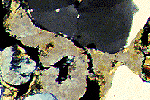
![]() Carbonates coating other pedofeatures
Carbonates coating other pedofeatures
In some cases the presence of carbonates covering other pedofeatures (e.g. clay coatings) is sufficient to prove their pedogenic origin.

